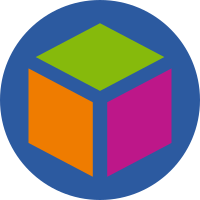Difference between revisions of "The Semantic Web"
From Scientolipedia
(new player, formatting) |
(semantic pic from wiki commons, removed one vid) |
||
| Line 1: | Line 1: | ||
<blockquote>"The '''Semantic Web''' is a collaborative movement led by the [[World Wide Web Consortium]] (W3C) that promotes common formats for data on the [[World Wide Web]]. By encouraging the inclusion of [[semantics|semantic]] content in web pages, the Semantic Web aims at converting the current web of unstructured documents into a "web of data". It builds on the W3C's [[Resource Description Framework]] (RDF). | <blockquote>"The '''Semantic Web''' is a collaborative movement led by the [[World Wide Web Consortium]] (W3C) that promotes common formats for data on the [[World Wide Web]]. By encouraging the inclusion of [[semantics|semantic]] content in web pages, the Semantic Web aims at converting the current web of unstructured documents into a "web of data". It builds on the W3C's [[Resource Description Framework]] (RDF). | ||
| − | + | [[File:Logo Semantic Web.svg|right|frameless|200x250px]] | |
According to the W3C, "The Semantic Web provides a common framework that allows data to be shared and reused across application, enterprise, and community boundaries." | According to the W3C, "The Semantic Web provides a common framework that allows data to be shared and reused across application, enterprise, and community boundaries." | ||
| Line 7: | Line 7: | ||
{| class="wikitable" cellpadding="6" width="100%" style="line-height:12px; padding:0px;vertical-align:middle;" | {| class="wikitable" cellpadding="6" width="100%" style="line-height:12px; padding:0px;vertical-align:middle;" | ||
!style="text-align:left;"|'''Intro to semantic web''' | !style="text-align:left;"|'''Intro to semantic web''' | ||
| − | !style="text-align:left;"|''' | + | !style="text-align:left;"|'''Inventor of the World Wide Web''' |
|- | |- | ||
|style="text-align:left;"|{{#widget:YouTube|id=OGg8A2zfWKg|width=500|height=400}} | |style="text-align:left;"|{{#widget:YouTube|id=OGg8A2zfWKg|width=500|height=400}} | ||
| − | |||
| − | |||
| − | |||
| − | |||
|style="text-align:left;"|{{#widget:YouTube|id=HeUrEh-nqtU|width=500|height=400}} | |style="text-align:left;"|{{#widget:YouTube|id=HeUrEh-nqtU|width=500|height=400}} | ||
|} | |} | ||
Revision as of 20:53, November 11, 2014
"The SemanticAs used in this context, it refers to re-using data from web pages that would otherwise not be available anywhere other than the single web page it is published on. A Semantic Wiki like this one, is enhanced Wiki software (like this in-line glossary function) that is far more complex and sophisticated, with advanced data collection, display and reporting methods. It is able to make relationships in the presentation of data to the user in ways regular Internet applications cannot.Web is a collaborative movement led by the World Wide Web Consortium (W3C) that promotes common formats for data on the World Wide Web. By encouraging the inclusion of semantic content in web pages, the SemanticAs used in this context, it refers to re-using data from web pages that would otherwise not be available anywhere other than the single web page it is published on. A Semantic Wiki like this one, is enhanced Wiki software (like this in-line glossary function) that is far more complex and sophisticated, with advanced data collection, display and reporting methods. It is able to make relationships in the presentation of data to the user in ways regular Internet applications cannot.
Web aims at converting the current web of unstructured documents into a "web of data". It builds on the W3C's Resource Description Framework (RDF).
According to the W3C, "The SemanticAs used in this context, it refers to re-using data from web pages that would otherwise not be available anywhere other than the single web page it is published on. A Semantic Wiki like this one, is enhanced Wiki software (like this in-line glossary function) that is far more complex and sophisticated, with advanced data collection, display and reporting methods. It is able to make relationships in the presentation of data to the user in ways regular Internet applications cannot.
The term was coined by Tim Berners-Lee, the inventor of the World Wide Web and director of the World Wide Web Consortium ("W3C"), which oversees the development of proposed SemanticAs used in this context, it refers to re-using data from web pages that would otherwise not be available anywhere other than the single web page it is published on. A Semantic Wiki like this one, is enhanced Wiki software (like this in-line glossary function) that is far more complex and sophisticated, with advanced data collection, display and reporting methods. It is able to make relationships in the presentation of data to the user in ways regular Internet applications cannot.Web provides a common framework that allows data to be shared and reused across application, enterprise, and community boundaries."
Web standards. He defines the SemanticAs used in this context, it refers to re-using data from web pages that would otherwise not be available anywhere other than the single web page it is published on. A Semantic Wiki like this one, is enhanced Wiki software (like this in-line glossary function) that is far more complex and sophisticated, with advanced data collection, display and reporting methods. It is able to make relationships in the presentation of data to the user in ways regular Internet applications cannot.
Web as "a web of data that can be processed directly and indirectly by machines." - (from Wikipedia def of semantic web)
| Intro to semantic web | Inventor of the World Wide Web |
|---|---|
